Tamarind is avaiable in sweet and sour varieties. The sour variety is used in Indian cooking, while Thai cuisine mainly uses the sweeter version. One famous Thai recipe which makes use of tamarind is Rice Noodles with Vegetables in Thai Red Curry Sauce. Most varieties of tamarind have a very sour taste while young. Although the fruit gets sweeter as it ages, the basic flavour is predominantly sour and acidic.
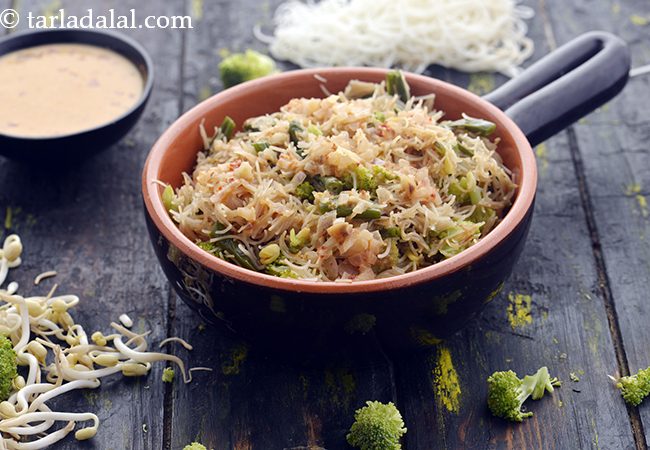 Rice Noodles with Vegetables in Thai Red Curry Sauce
Rice Noodles with Vegetables in Thai Red Curry Sauce
A famous drink made using tamarind is Amlana. Have you heard of it? If not, try it out today. It is a delicious Rajasthani drink made with tamarind pulp, perked up with spices like pepper and cardamom. The addition of black salt imparts a wonderful flavour, which is further enhanced by the minty garnish.
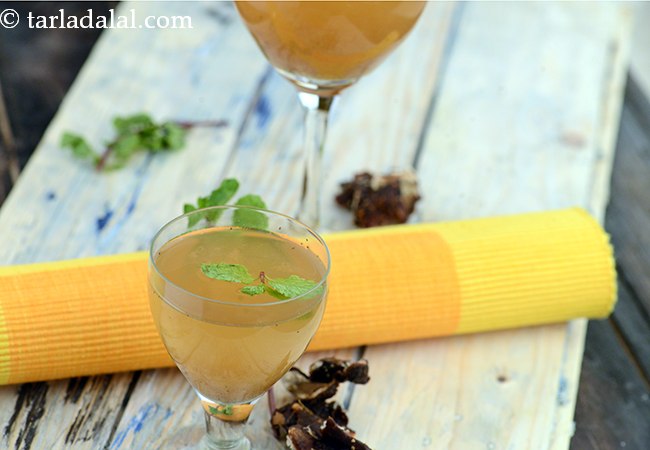 Amlana
Amlana
Tamarind needs to be soaked before use. Usually tamarind pulp and tamarind water are used in cooking. The tamarind too after removing the pulp or making water is discarded. As the name suggests, tamarind pulp is thick as compared to the tamarind water. Learn how to make the perfect tamarind pulp. The use of either of these lend a typical sour taste to the dish in which it is added and this taste is quite pleasing if added in correct proportion.
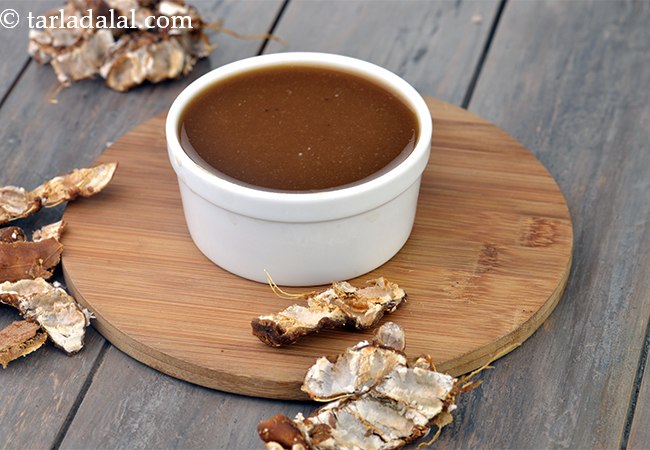 Tamarind Pulp, Imli Pulp
Tamarind Pulp, Imli Pulp
South Indian Recipes using Tamarind, Imli
Tamarind and South Indian cuisine has a very deep relation. It forms a part of many dishes in this region and it is said that, ‘A South Indian kitchen is incomplete without tamarind’.
The most prominent use of tamarind is in making Sambar – a delicacy made in most South Indian households almost daily. The sourness of this recipes is a combination of tamarind pulp and tomatoes both. A common way to have sambar is with steamed rice, papadum and spicy mango pickle for lunch.
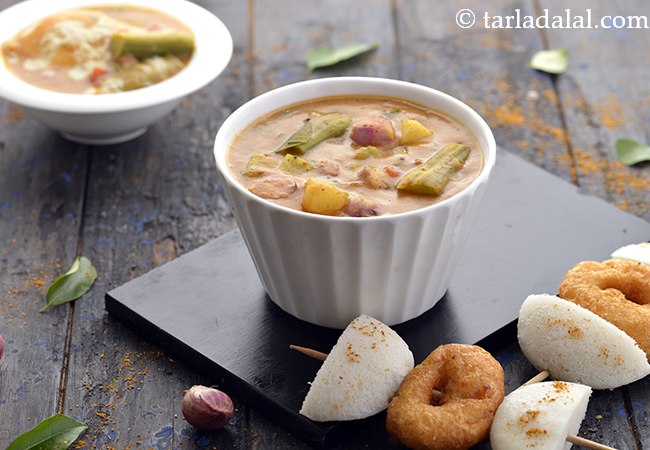 Sambar Recipe, South Indian Homemade Sambar Recipe
Sambar Recipe, South Indian Homemade Sambar Recipe
Similarly, rasam another delicacy served with a variety of South Indian dishes like vada, rice, idli etc. also gets a part of its tempting flavours and aroma due to the use of tamarind. This homeliest South Indian recipe made with rasam powder is a thin lentil soup perked up with tamarind pulp and chopped tomatoes, a traditional rasam powder, and a simple seasoning of mustard seeds and curry leaves.
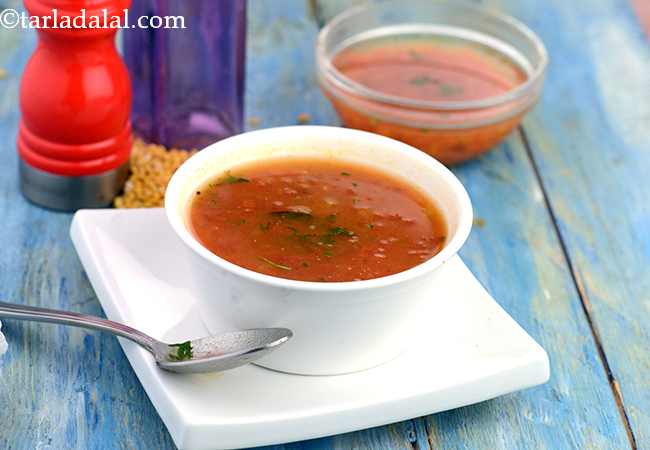 Rasam, South India Rasam, Home Made Rasam
Rasam, South India Rasam, Home Made Rasam
Tamarind Rice is a South Indian style tamarind rice. Tamarind rice or popularly known as puliyodharai, puliyogare, pulihora, puli sadam is a famous South-Indian tangy, spicy rice preparation. Puli” refers to Tamarind in Kannada, Telugu and Tamil. The essence of this recipe is not just the use of tamarind pulp, but also a special spice powder made with 3 types of dals with Kashmiri red chillies and sesame seeds. Try it out!
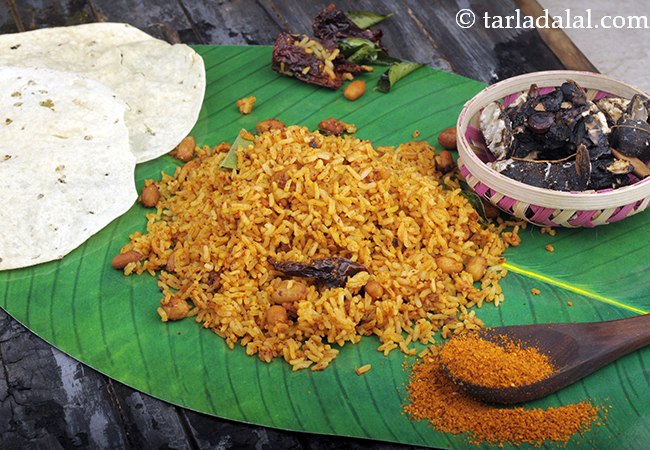 Tamarind Rice
Tamarind Rice
South Indian sabzis are no exception. Imli finds it splace in this course too. Hyderabadi Mirchi ka Salan is a classic example of this. It is an Indian curry of Bhavnagri chillies, flavoured with a rich paste of roasted peanuts, coconut, sesame seeds and red chillies. Mirchi in hindi refers to green chilli and salan in an urdu word which refers to curry. People have Hyderabadi mirchi ka salan along biryani but this versatile curry also goes very well with chapatti, rice or paratha.
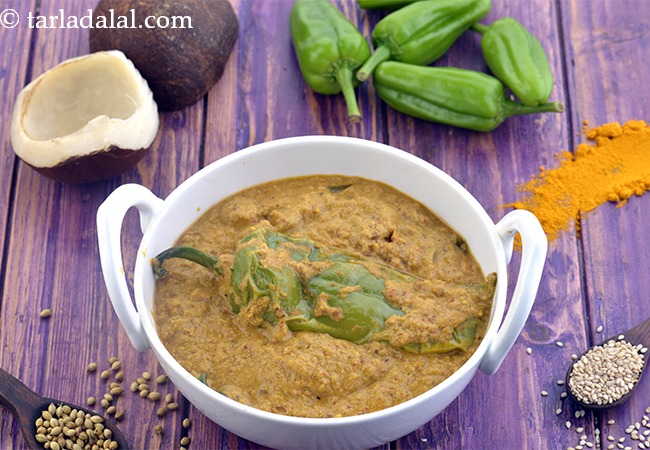 Mirchi Ka Salan (Hyderabadi Style)
Mirchi Ka Salan (Hyderabadi Style)
The Karnataka’s famous Bisi Bele Bhaat also features tamarid along with a host of spices and coconut as its main ingredient. In this recipe, rice and toovar dal along with a special coconut paste and tamarind pulp is pressure cooked and finally served with a dollop of ghee as a one dish meal.
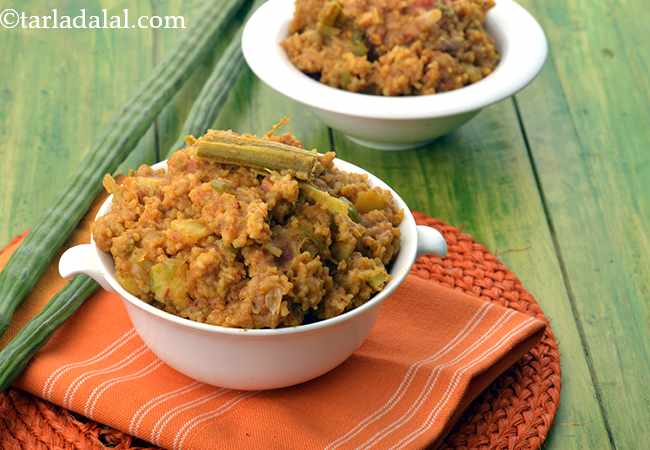
Bisi Bele Bhaat, Karnataka Bise Bele Bhat
Ah! The famous chutneys of south served with a variety of dosas are truly irresistible. Some of these make use of tamarind too. The famous Mysore Chutney has a combination of dals, tamarind and spices. Tamarind pulp lends the necessary sourness and to balance it jaggery is used in small quantities.
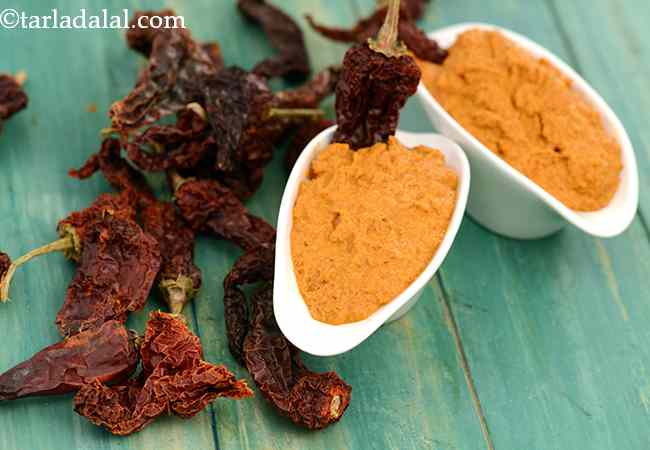 Mysore Chutney, South Indian Mysore Chutney
Mysore Chutney, South Indian Mysore Chutney
Another not so famous chutney of South is Curry Leaves Chutney. It is made with spices, daria, curry leaves, tamarind pulp and sesame seeds and really come in handy on days when you do not have time to prepare chutney or Sambhar to accompany your Idlis and dosas. To make an interesting snack, you just need to coat your cooked idlis with til oil mixed with Curry Leaves Chutney Powder, or sprinkle some powder on the semi-cooked dosa before turning it around, to make a self-sufficient snack!
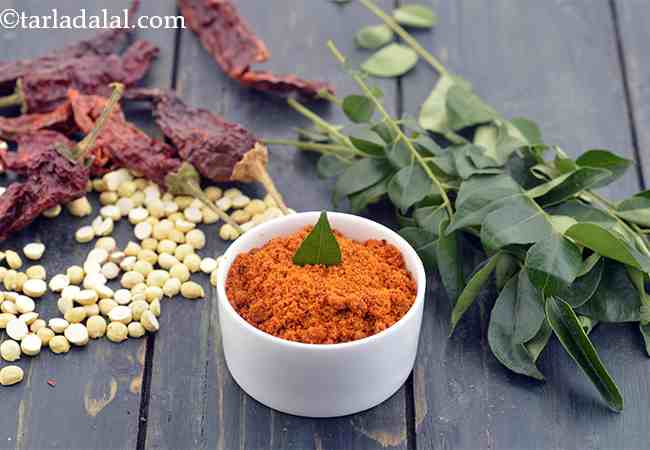 Curry Leaves Chutney Powder
Curry Leaves Chutney Powder
Indian Snack Recipes with Tamarind, Imli
Who doesn’t love to indulge in snacks? Made with an array of spices, chutneys, topped with sev and coriander, they are the most tempting. Yes, we are talking about Indian Chaat Recipes. The famous Mumbai roadside snack Pani Puri makes use of loads of imli to get the authentic taste of its pani. Want to learn the exact proportion of ingredients that go in making this recipe, find out here!
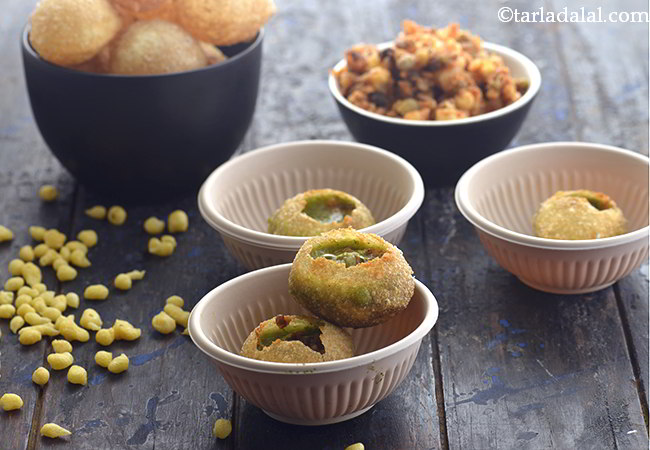 Pani Puri, Paani Puri, Golgappa Recipe
Pani Puri, Paani Puri, Golgappa Recipe
And how about the Meetha Chutney which is also served along with pani puri? It also is made with tamarind as its base ingredient. Its use is not restricted to just pani puri, but it is also used in most Indian Chaat Recipes like Bhel Puri, Sev Puri, papdi chaat and ragda pattice. Indian chaat is incomplete without the accompaniment of Meetha Chutney.
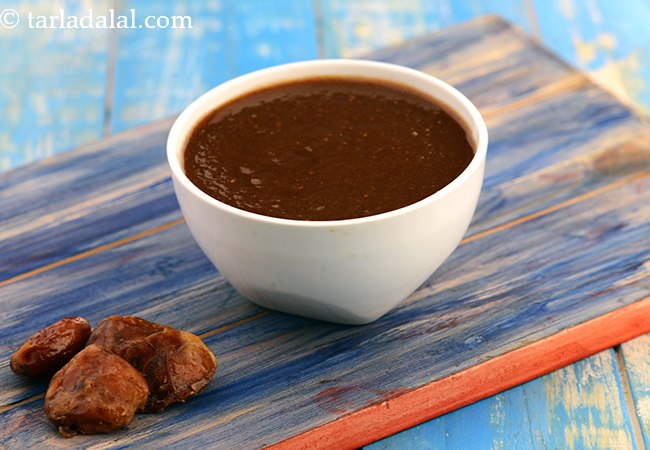 Meetha Chutney
Meetha Chutney
Have you ever tried the famous West Indian Patra? It is sweet, spicy and salty—all at the same time. Ingredients of paatra are simple, made from colocasia leaves (arbi ke patte), besan, tamarind water, jaggery, green chilli paste and Indian spices. Getting the right proportion of ingredients is definitelt important to enjoy its traditional flavor, but rolling patra is more of an art to be acquired. Learn the secret of making Steamed Patra with 28 step by step photos.
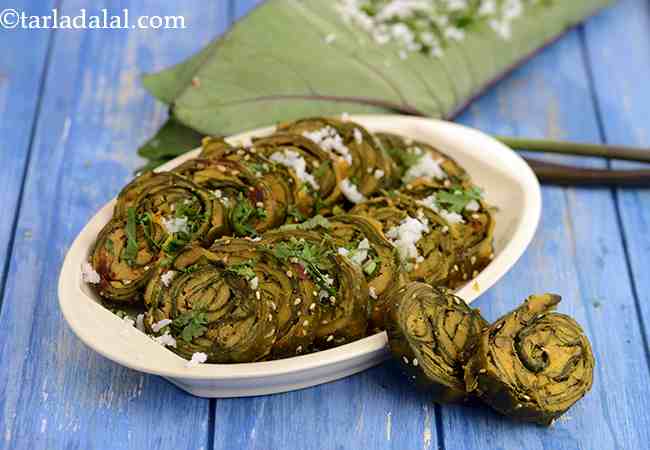 Patra, Gujarati Patra, Alu Vadi
Patra, Gujarati Patra, Alu Vadi
Indian Dals and Sabzi Recipes using Tamarind, Imli
India is a diverse country with varied cultutre and traditions and with it also follows a variety in terms of cuisine. However, tamarind is one such ingredient which finds place in many Indian cuisines from Gujarati to Maharshtrian and even Hyderabadi to Sindhi. Let’s explore some main course sabzi recipes where tamarind is of utmost importance for its flavor, colour and aroma it lends.
The authentice Maharashtrian Paatal Bhaji, is a nourishing daily fare which can be enjoyed by people of all ages. Made with chopped colocasia leaves, chana dal and a cocont paste, it is further perked up with the right balance of imli pulp and jaggery. This iron rich recipe is surely worth a try!
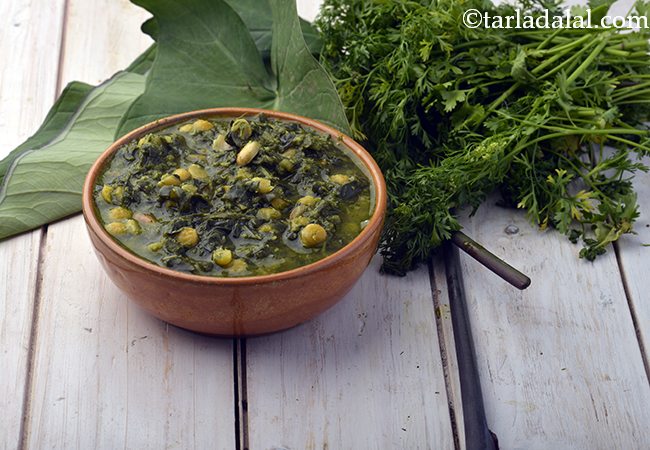 Maharashtrian Patal Bhaji, Paatal Bhaji
Maharashtrian Patal Bhaji, Paatal Bhaji
Bharleli Vaangi is an all-time favourite Maharashtrian bhaji that tastes great. It is a semi-dry sabzi that is very popular in Maharashtra and quite easy to make. Maharashtrian bharli vangi is made on day to day basis in Maharashtrian household. This has a specially crafted masala mixture which again has tamarind-jaggery combo for the right sweet and sour flavours. Make this authentic recipe the quick way in a pressure cooker and enjoy it with chapati.
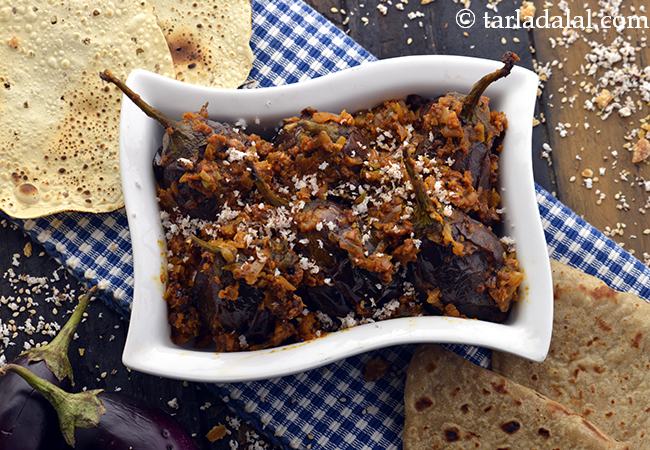 Bharli Vangi Made in Pressure Cooker
Bharli Vangi Made in Pressure Cooker
Bored of having the usual dal for your everyday meal try our palak masoor dal recipe, the unbeatable combination of masoor dal with spinach nourishes your body with proteins, iron and folic acid. Tamarind pulp lends a nice tangy flavour to the dal. It’s a healthy dal to be enjoyed by people of all ages.
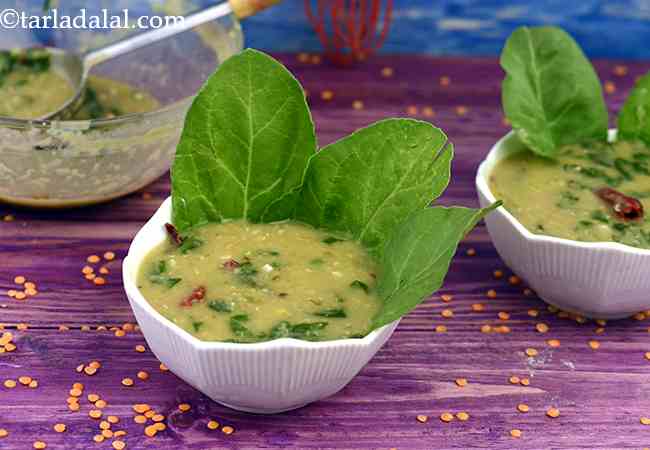 Palak Masoor Dal
Palak Masoor Dal
Sindhi Kadhi is a besan based curry with lots of vegetables. It is one such fare where all the vegetables are used beautifully to complement each other in taste, colour and texture. Tamarind pulp, though, in small quantities adds its own unique sourness to this dish. Relish it with Steamed Rice.
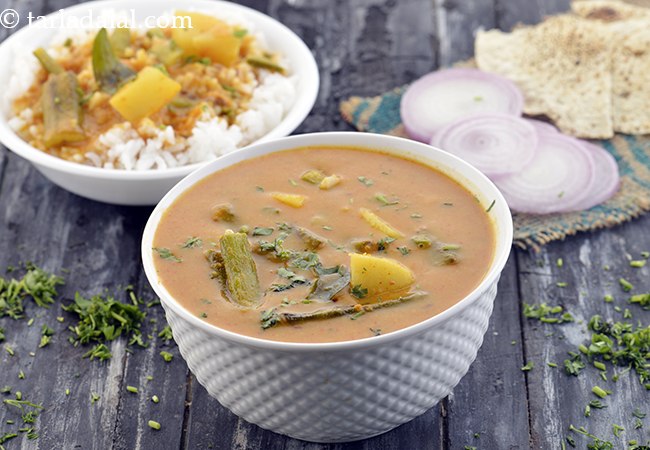 Sindhi Kadhi
Sindhi Kadhi
Health benefits of tamarind, imli
Tamarind is a good source of antioxidant polyphenols which exhibit anti-inflammatory properties. This can protect different organs of the body like heart, liver, skin etc. Some research shows that it helps to lower blood cholesterol too. It has negligible amount of fat, but on the other hand, tamarind is pretty high on calorie scale. So one needs to be very cautious about the quantity consumed. Tamarind is a rich source of vitamin C, fibre, potassium, magnesium and other nutrients necessary for good health. Some people are allergic to tamarind, while others may experience diarrhoea with excess consumption as imli is also known for its laxative properties.